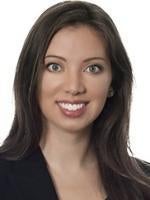Many parties in front of the Patent Trial and Appeal Board (Board) struggle with the handling of evidentiary issues. This struggle is heightened when expert evidence is the focus. In Tietex International, Ltd. v. Precision Fabrics Group, Inc., IPR2014-01248 (Paper 39, Jan. 27, 2016), the Board illustrated the difference between admissibility of expert testimony and weight. To be sure, a witness whose area of expertise extends only to one aspect of an invention may provide admissible testimony in that particular area. But conclusory expert testimony is not due any weight and a petitioner cannot count on supplementing a deficient declaration with its reply.
With its petition, Tietex included a declaration from Dr. Wilkie, an expert in flame retardant chemicals. But since the patent-at-issue claimed certain flame retardant fabrics, patent owner Precision Fabrics sought to exclude Dr. Wilkie’s testimony under FRE 702, contending that he was not one of skill in the art because he lacked experience with fabrics.
The Board denied Precision Fabric’s motion, relying on SEB S.A. v. Montgomery Ward & Co., Inc., 594 F.3d 1360, 1372–73 (Fed. Cir. 2010). In that case, the Court affirmed that an expert’s testimony in his area of expertise is admissible even though the expert is not proficient in all aspects of the claimed invention. Likewise, the Board in Tietex found that Dr. Wilkie was qualified to testify in the “pertinent art” of “flame retardancy,” but to the extent his testimony strayed into textiles, the Board cautioned that it would discount his testimony accordingly.
This was a hollow victory for the Petitioner, Tietex. In addressing the merits, the Board was not persuaded by Dr. Wilkie’s conclusory testimony that a prior-art fabric inherently possessed the claimed level of thermal protection. The Board accorded Dr. Wilkie's testimony no weight relying on 37 C.F.R. § 42.65, which states: “Expert testimony that does not disclose the underlying facts or data on which the opinion is based is entitled to little or no weight.”
Tietex also tried to fix its deficient petition by submitting a detailed declaration on this very issue from another expert, Dr. Horrocks. Although Tietex presented this new evidence in reply to deficiencies raised in Precision Fabrics’ response, the Board did not consider it. Because this new evidence was not in the petition, the patent owner, Precision Fabrics, did not have an opportunity to adequately respond. The Board further explained that, although Precision Fabrics filed observations on Dr. Horrock’s cross examination, “such observations are not designed for submitting substantive arguments.”
This case provides lessons for both sides of a proceeding. Expert testimony can be attacked on dual fronts—admissibility and weight. Also, when preparing an expert testimony, it is critical to provide sufficient support for the expert's opinions and findings.
For a patent owner, the response strategy must take into account the possibility that the petitioner may introduce new evidence in the reply to rehabilitate its expert testimony. An aggressive strategy to raise scope issues after a petitioner's reply, particularly regarding expert testimony, is a must.
A petitioner, on the other hand, must be sure to make and fully support its case in the petition, perhaps by using different experts for different aspects of the claimed invention. Certainly, Board panels regularly consider reply evidence, but you cannot count on the Board allowing you to rehabilitate conclusory testimony or an otherwise deficient petition at that late stage of the proceeding.





 />i
/>i

